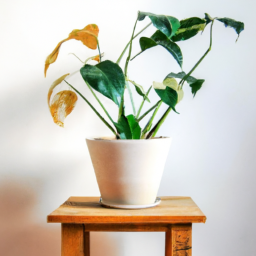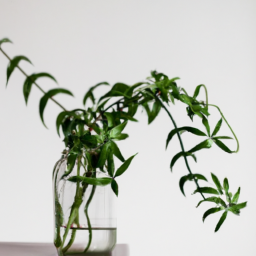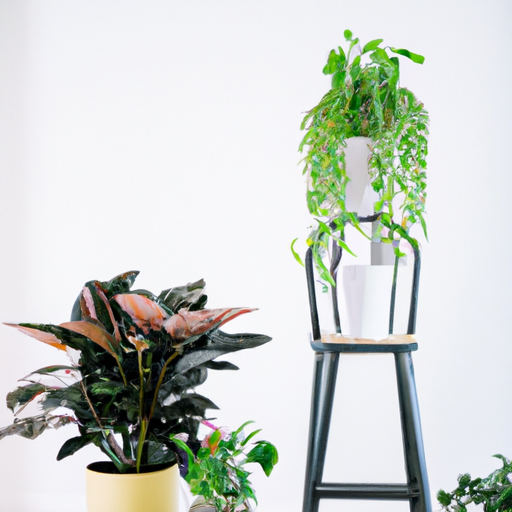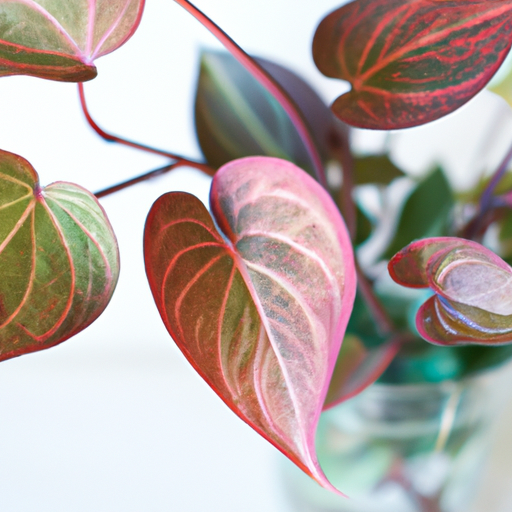
Are you a fan of minimalist interiors but find yourself longing for a touch of nature? Look no further! In this blog post, we will explore the wonderful world of incorporating plants into minimalist interiors. Yes, you read it right – plants and minimalism can coexist harmoniously, creating a serene and refreshing atmosphere in your living space. Whether you’re a seasoned minimalist or just starting to embrace the simplicity of this design style, adding plants to your interiors can bring life and vibrancy without compromising the clean and clutter-free aesthetic you love. So, let’s dive in and discover how you can effortlessly incorporate plants into your minimalist haven.
Benefits of Incorporating Plants into Minimalist Interiors
When it comes to minimalist interiors, simplicity and functionality are key. However, adding plants to your minimalist space can bring numerous benefits that go beyond just aesthetics. Incorporating plants into minimalist interiors not only enhances the visual appeal but also promotes a healthier and more harmonious living environment. In this article, we will explore the various benefits of incorporating plants into minimalist interiors and provide you with a step-by-step guide on how to do it effectively.
Improved Air Quality
One of the most significant benefits of incorporating plants into minimalist interiors is the improvement of indoor air quality. Plants act as natural air purifiers by absorbing carbon dioxide and releasing oxygen through the process of photosynthesis. Additionally, they can remove harmful toxins, such as formaldehyde and benzene, from the air, which are commonly found in household products and materials. By introducing plants into your minimalist space, you can create a healthier and cleaner environment for you and your family.
Furthermore, certain plants, like the snake plant and peace lily, have been shown to be particularly effective in filtering out pollutants and increasing humidity levels, which can alleviate respiratory issues and reduce the risk of allergies and asthma.
Aside from their air-purifying properties, plants also release moisture through a process called transpiration. This natural moisture release can help combat dry indoor air, especially during colder months when heating systems tend to dry out the air. By incorporating plants into your minimalist interior, you can improve the overall humidity levels and create a more comfortable living space.
Enhanced Mental Well-being
Another significant benefit of incorporating plants into minimalist interiors is the positive impact they have on mental well-being. Numerous studies have shown that being surrounded by plants can reduce stress levels, increase productivity, and improve overall mood.
Plants have a calming effect on our minds and bodies. The presence of greenery can help create a sense of tranquility and relaxation, making your minimalist space a peaceful sanctuary. The act of caring for plants, such as watering and pruning, can also provide a therapeutic and mindful experience, allowing you to disconnect from the digital world and reconnect with nature.
In addition, plants can improve concentration and focus, making them ideal for home offices or study areas within minimalist interiors. The natural elements of plants help to create a more inviting and stimulating environment, fostering creativity and productivity.
Visual Appeal and Natural Aesthetics
While minimalist interiors often prioritize clean lines and a neutral color palette, incorporating plants can add a touch of natural beauty and visual interest to the space. Plants bring life and vibrancy, breaking the monotony of a minimalist design and creating a more inviting atmosphere.
Choose plants with different shapes, sizes, and textures to create a visually appealing arrangement. A mix of tall plants, hanging plants, and tabletop plants can add depth and dimension to your minimalist interior. Consider using planters in various materials, such as ceramic, terracotta, or woven baskets, to complement the overall aesthetic of your space.
Furthermore, plants can be used strategically to highlight specific areas or architectural features within your minimalist interior. For example, placing a large potted plant near a window can draw attention to the natural light and create a focal point in the room.
In conclusion, incorporating plants into minimalist interiors offers numerous benefits, including improved air quality, enhanced mental well-being, and added visual appeal. By following these steps, you can seamlessly integrate plants into your minimalist space and create a harmonious and inviting environment. Embrace the beauty of nature within your minimalist interior and enjoy the positive impact it brings to your overall well-being.

Choosing the Right Plants for Minimalist Interiors
Welcome to the world of incorporating plants into minimalist interiors! Whether you are a plant enthusiast or simply looking to add a touch of greenery to your space, choosing the right plants that align with the minimalist aesthetic can be a game-changer. In this guide, we will walk you through the process of selecting plants that not only thrive in minimalist interiors but also enhance the overall ambiance of your space.
1. Consider the Space and Lighting
Before diving into the plant selection process, take a moment to evaluate the space and lighting conditions of your minimalist interior. Different plants have varying light requirements, and it’s crucial to choose plants that will thrive in your specific environment. Assess the amount of natural light your space receives throughout the day and identify areas where you intend to place the plants.
If you have ample natural light, consider plants that thrive in bright, indirect sunlight. Some popular choices include the snake plant, pothos, and ZZ plant. These plants are known for their ability to tolerate low-light conditions and require minimal maintenance. On the other hand, if your space has limited natural light, opt for plants that can thrive in low-light conditions, such as the peace lily, Chinese evergreen, or cast iron plant.
Additionally, take into account the available floor or shelf space in your minimalist interior. If you have limited floor space, consider hanging plants like the spider plant or trailing pothos. For shelves, opt for small potted plants like succulents or cacti that can add a touch of greenery without overwhelming the space.
2. Embrace Minimalist Plant Aesthetics
Minimalist interiors are characterized by clean lines, simplicity, and a focus on functionality. When selecting plants, it’s essential to choose ones that align with these aesthetics. Opt for plants with sleek, architectural shapes and minimalistic foliage. Plants like the snake plant or the fiddle leaf fig are excellent choices as they feature bold, structured leaves that add visual interest to a minimalist space.
Consider the color palette of your interior when selecting plants. Minimalist interiors often feature neutral tones, so choose plants with foliage that complements the overall color scheme. Plants with variegated leaves, like the pothos or the prayer plant, can add a subtle pop of color without overpowering the space.
Remember, less is more in minimalist interiors. Instead of overcrowding the space with numerous plants, select a few statement plants that can serve as focal points. This approach will create a more impactful and visually pleasing display.
3. Maintenance and Care
When incorporating plants into minimalist interiors, it’s crucial to consider the maintenance and care required. Minimalist aesthetics often prioritize simplicity and a clutter-free environment, so choose plants that are low-maintenance and easy to care for.
Consider your lifestyle and the amount of time you can dedicate to plant care. If you have a busy schedule or tend to forget watering plants, opt for plants that require minimal watering, such as succulents or cacti. These plants store water in their leaves or stems, making them more forgiving if you occasionally forget to water them.
Additionally, choose plants that are resilient and can tolerate fluctuations in temperature and humidity. This is particularly important if you live in a region with extreme weather conditions. Plants like the snake plant, ZZ plant, or the rubber plant are known for their ability to withstand various environmental conditions, making them ideal choices for minimalist interiors.
In conclusion, incorporating plants into minimalist interiors is a wonderful way to bring nature indoors while maintaining the clean and simple aesthetic. By considering the space and lighting, embracing minimalist plant aesthetics, and selecting low-maintenance plants, you can create a harmonious and visually appealing environment. Remember, the key is to strike a balance between greenery and minimalism, allowing the plants to enhance the overall ambiance without overpowering the space.

3. Creative Ways to Display Plants in Minimalist Interiors
Welcome to the world of minimalist interiors, where simplicity and functionality take center stage. Incorporating plants into minimalist spaces can add a touch of nature, enhance the aesthetic appeal, and create a serene atmosphere. In this comprehensive guide, we will explore creative ways to display plants in minimalist interiors.
1. Hanging Planters
One of the most popular and visually appealing ways to incorporate plants into minimalist interiors is by using hanging planters. These suspended beauties not only save space but also add an interesting vertical element to the room. Choose planters made of natural materials like macrame or woven baskets to maintain the organic feel of your space.
When selecting plants for hanging planters, consider those with trailing vines or cascading foliage. Pothos, String of Pearls, and Spider Plants are excellent choices. Hang them near windows or in corners to create a captivating display. Remember to adjust the height of the planters to ensure they don’t obstruct movement within the room.
To achieve a cohesive look, group multiple hanging planters at varying heights. This will create a visually striking arrangement that complements the minimalist aesthetic. Experiment with different plant combinations and pot colors to find the perfect balance for your space.
2. Wall-mounted Plant Shelves
If you have limited floor space, wall-mounted plant shelves are a fantastic option. These shelves not only provide a dedicated spot for your green companions but also double as decorative elements. Opt for sleek, minimalist shelves in materials like wood or metal to maintain the overall theme of your interior.
When arranging plants on wall-mounted shelves, consider the varying heights and growth patterns of your plants. Mix and match species with different foliage textures and colors to create an eye-catching display. Some excellent choices include Snake Plants, Air Plants, and small succulents.
Ensure that the shelves are securely mounted to the wall and can bear the weight of the plants. Consider incorporating additional elements like small decorative objects or books to add visual interest and create a harmonious composition.
3. Terrariums and Glass Containers
Terrariums and glass containers are perfect for incorporating plants into minimalist interiors while adding a touch of elegance. These enclosed ecosystems create a captivating focal point and require minimal maintenance. Choose geometric or cylindrical glass containers to enhance the modern and clean lines of your interior.
When assembling a terrarium, select plants that thrive in humid environments with low light levels. Ferns, Fittonias, and Mosses are ideal choices. Add decorative elements like rocks, pebbles, or small figurines to create a miniature landscape within the glass container.
Place your terrarium or glass container on a side table, shelf, or even as a centerpiece on your dining table. Ensure they receive indirect sunlight and mist them occasionally to maintain the humidity levels within the enclosure.
Remember to regularly check for any signs of overgrowth or excessive condensation, as these may indicate the need for adjustments in light or watering frequency.
By following these creative ways to display plants in minimalist interiors, you can elevate the aesthetic appeal of your space while maintaining the simplicity and functionality that defines minimalism. Experiment with different plant species, containers, and arrangements to find the perfect balance that suits your personal style and preferences.
Key Takeaways
Incorporating plants into minimalist interiors can be a game-changer for those seeking to add a touch of nature to their living spaces without compromising on simplicity and clean lines. While minimalism often revolves around a neutral color palette and the absence of clutter, plants can bring life, texture, and a sense of tranquility to these spaces.
Plants not only add aesthetic value but also offer numerous benefits for our well-being. They purify the air by absorbing carbon dioxide and releasing oxygen, creating a healthier indoor environment. Moreover, studies have shown that being surrounded by greenery can reduce stress levels, boost mood, and improve productivity. When it comes to minimalist interiors, it’s important to choose plants that complement the overall design. Opting for plants with simple and sleek silhouettes, such as snake plants or monstera deliciosas, can seamlessly blend into a minimalist aesthetic. Additionally, hanging plants or small potted plants can be strategically placed to add visual interest without overwhelming the space. By carefully selecting the right plants and incorporating them into minimalist interiors, you can create a harmonious balance between nature and simplicity, enhancing the overall ambiance of your living space.
Frequently Asked Questions (FAQ):
Q1: How can I incorporate plants into minimalist interiors?
A1: Incorporating plants into minimalist interiors is a great way to add a touch of nature and warmth to your space. You can start by choosing plants that have a simple and clean aesthetic, such as succulents or monstera deliciosa. Place them in minimalist pots or planters that complement your interior style. Additionally, consider using hanging planters or wall-mounted planters to save space and create a visually appealing vertical garden.
Q2: What are some low-maintenance plants suitable for minimalist interiors?
A2: If you’re looking for low-maintenance plants for your minimalist interiors, there are several options to consider. Succulents, such as aloe vera or jade plants, are ideal as they require minimal watering and care. Snake plants and ZZ plants are also great choices as they can tolerate low-light conditions and infrequent watering. These plants not only add a touch of green to your space but also thrive in minimalist settings with their simple and sleek appearance.
Q3: How can I arrange plants in a minimalist way?
A3: When arranging plants in a minimalist way, simplicity is key. Consider creating groupings of plants with varying heights and textures to add visual interest. Place them strategically in areas that need a pop of green, such as on shelves, window sills, or even on a minimalist coffee table. Remember to leave plenty of negative space around each plant to maintain a clean and uncluttered look, keeping in line with minimalist design principles.
Q4: Can plants help improve the air quality in minimalist interiors?
A4: Yes, plants can indeed help improve the air quality in minimalist interiors. Many plants have the ability to purify the air by removing toxins and releasing oxygen. For example, the snake plant is known for its air-purifying properties as it absorbs toxins and releases oxygen at night. Adding plants like peace lilies, spider plants, or English ivy can also contribute to cleaner air in your minimalist space, creating a healthier environment for you.
Q5: How do I ensure that incorporating plants into my minimalist interiors doesn’t clutter the space?
A5: To ensure that incorporating plants into your minimalist interiors doesn’t clutter the space, it’s important to be mindful of the number and size of plants you choose. Opt for a few well-placed statement plants rather than filling every available surface with greenery. Consider using minimalist plant stands or shelves to elevate and display your plants, keeping them organized and preventing them from overwhelming the space. Regularly assess and rotate your plant collection to maintain a balanced and clutter-free environment.
Emily Bloomfield is an interior designer and horticulturist specializing in incorporating indoor plants into interior spaces. With a background in both design and plant science, Emily offers a unique perspective on creating harmonious living environments through the synergy of greenery and aesthetics. Her creative ideas and innovative solutions make her a sought-after authority in the field.


